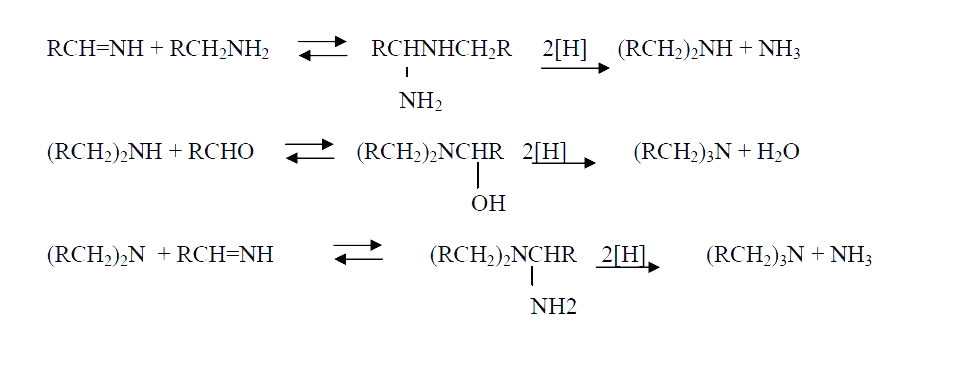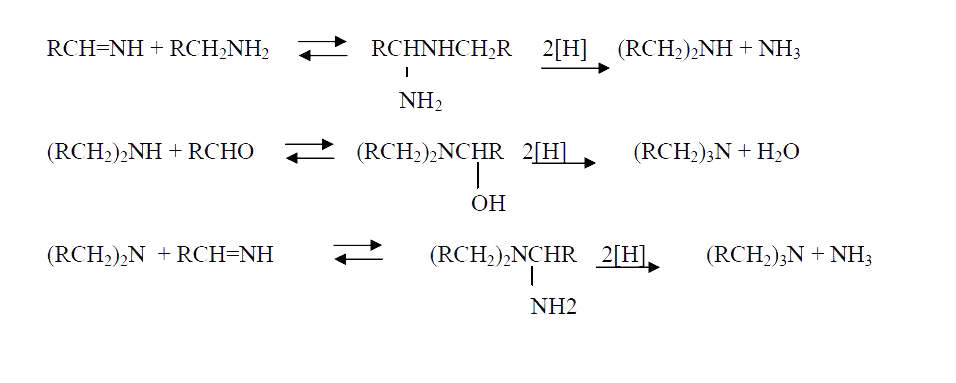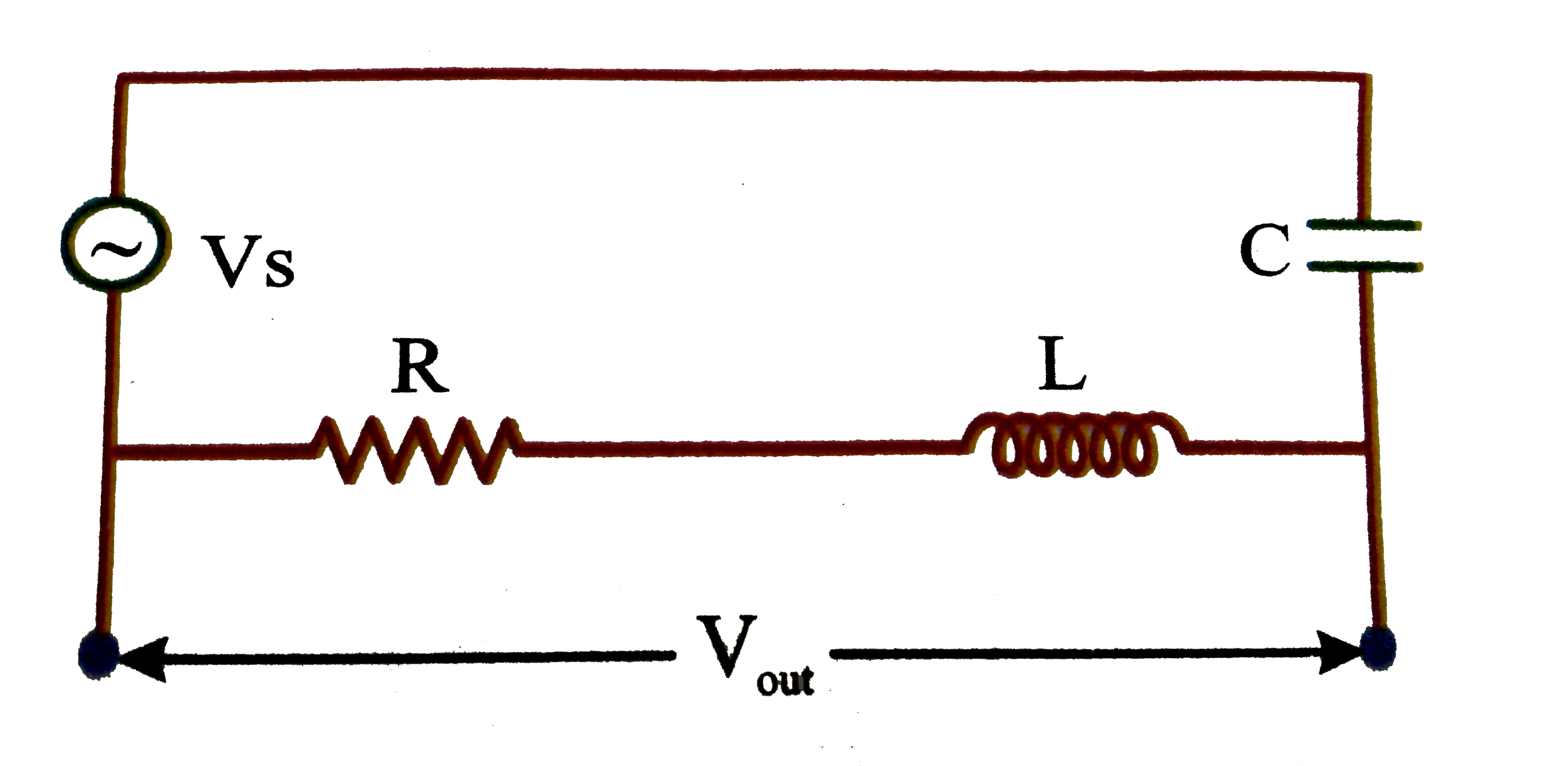A: The process of demodulation is carried out to retrieve the message signal.
R: The range of the line-of -sight propagatin is limited mainly due to earth's curvature.
If both assertion and reason are true and reason is the correct explanation of assertion
If both assertion and reason are true but reason is not the correct explanation of assertion
If assertion is true but reason is false
If both assertion and reason are false.
The correct Answer is:B
Similar Questions
Assertion: AM detection is the process of recovering the modulating signal from amplitude modulated waveform wich is carried out using a rectifier and an evelope detector.
Reason: Amplitude modulated waves can be produced by application of the message signal and the carrier wave to a non-linear device followed by band pass filter.
View SolutionRead the passage given below and answer the following questions:
Reductive alkylation is the term applied to the process of introducing alkyl groups into ammonia or a primary or secondary amine by means of an aldehyde or ketone in the presence of a reducing agent. The present discussion is limited to those reductive alkylations in which the reducing agent is hydrogen and a catalyst or "nascent" hydrogen, usually from a metalacid combination, most of these reductive alkylations have been carried out with hydrogen and a catalyst. The principal variation excluded is that in which the reducing agent is formic acid or one of its derivatives, this modification is known as the Leuckart reaction. The process of reductive alkylation of ammonia consists in the addition of ammonia to a carbonyl compound and reduction of the addition compound or its dehydration product. The reaction usually is carried out in ethanol solution when the reduction is to be effected catalytically

Since the primary amine is formed in the presence of the aldehyde it may react in the same way as ammonia, yielding an addition compound, a Schiff's base (RCH=NCH2R) and finally, a secondary amine. Similarly, the primary amine may react with the imine, forming an addition product which also is reduced to a secondary amine Finally, the secondary amine may react with either the aldehyde or the imine to give products which are reduced to tertiary amines.

Similar reactions may occur when the carbonyl compound employed is a ketone.
(source: Emerson, W. S. (2011). The Preparation of Amines by Reductive Alkylation. Organic Reactions, 174–255. doi:10.1002/0471264180.or004.03 )
Ethanal on reaction with ammonia forms an imine (X) which on reaction with nascent hydrogen gives (Y). Identify ‘X’ and ‘Y’.
View Solution
Knowledge Check
Read the passage given below and answer the following questions:
Reductive alkylation is the term applied to the process of introducing alkyl groups into ammonia or a primary or secondary amine by means of an aldehyde or ketone in the presence of a reducing agent. The present discussion is limited to those reductive alkylations in which the reducing agent is hydrogen and a catalyst or "nascent" hydrogen, usually from a metalacid combination, most of these reductive alkylations have been carried out with hydrogen and a catalyst. The principal variation excluded is that in which the reducing agent is formic acid or one of its derivatives, this modification is known as the Leuckart reaction. The process of reductive alkylation of ammonia consists in the addition of ammonia to a carbonyl compound and reduction of the addition compound or its dehydration product. The reaction usually is carried out in ethanol solution when the reduction is to be effected catalytically

Since the primary amine is formed in the presence of the aldehyde it may react in the same way as ammonia, yielding an addition compound, a Schiff's base (RCH=NCH2R) and finally, a secondary amine. Similarly, the primary amine may react with the imine, forming an addition product which also is reduced to a secondary amine Finally, the secondary amine may react with either the aldehyde or the imine to give products which are reduced to tertiary amines.

Similar reactions may occur when the carbonyl compound employed is a ketone.
(source: Emerson, W. S. (2011). The Preparation of Amines by Reductive Alkylation. Organic Reactions, 174–255. doi:10.1002/0471264180.or004.03 )
Reductive alkylation of ammonia by means of an aldehyde in presence of hydrogen as reducing agents results in formation of:APrimary aminesBSecondary aminesCTertiary aminesDMixture of all three aminesRead the passage given below and answer the following questions:
Reductive alkylation is the term applied to the process of introducing alkyl groups into ammonia or a primary or secondary amine by means of an aldehyde or ketone in the presence of a reducing agent. The present discussion is limited to those reductive alkylations in which the reducing agent is hydrogen and a catalyst or "nascent" hydrogen, usually from a metalacid combination, most of these reductive alkylations have been carried out with hydrogen and a catalyst. The principal variation excluded is that in which the reducing agent is formic acid or one of its derivatives, this modification is known as the Leuckart reaction. The process of reductive alkylation of ammonia consists in the addition of ammonia to a carbonyl compound and reduction of the addition compound or its dehydration product. The reaction usually is carried out in ethanol solution when the reduction is to be effected catalytically

Since the primary amine is formed in the presence of the aldehyde it may react in the same way as ammonia, yielding an addition compound, a Schiff's base (RCH=NCH2R) and finally, a secondary amine. Similarly, the primary amine may react with the imine, forming an addition product which also is reduced to a secondary amine Finally, the secondary amine may react with either the aldehyde or the imine to give products which are reduced to tertiary amines.

Similar reactions may occur when the carbonyl compound employed is a ketone.
(source: Emerson, W. S. (2011). The Preparation of Amines by Reductive Alkylation. Organic Reactions, 174–255. doi:10.1002/0471264180.or004.03 )
(CH3CH2CH2)2NH+CH3CH2CHO→P2[H]−−→Q
The ompound Q is :A(CH3CH2CH2)3NB(CH3CH2CH2)2N(CH2CH3)C(CH3CH2)3ND(CH3CH2)2NHRead the passage given below and answer the following questions:
Reductive alkylation is the term applied to the process of introducing alkyl groups into ammonia or a primary or secondary amine by means of an aldehyde or ketone in the presence of a reducing agent. The present discussion is limited to those reductive alkylations in which the reducing agent is hydrogen and a catalyst or "nascent" hydrogen, usually from a metalacid combination, most of these reductive alkylations have been carried out with hydrogen and a catalyst. The principal variation excluded is that in which the reducing agent is formic acid or one of its derivatives, this modification is known as the Leuckart reaction. The process of reductive alkylation of ammonia consists in the addition of ammonia to a carbonyl compound and reduction of the addition compound or its dehydration product. The reaction usually is carried out in ethanol solution when the reduction is to be effected catalytically

Since the primary amine is formed in the presence of the aldehyde it may react in the same way as ammonia, yielding an addition compound, a Schiff's base (RCH=NCH2R) and finally, a secondary amine. Similarly, the primary amine may react with the imine, forming an addition product which also is reduced to a secondary amine Finally, the secondary amine may react with either the aldehyde or the imine to give products which are reduced to tertiary amines.

Similar reactions may occur when the carbonyl compound employed is a ketone.
(source: Emerson, W. S. (2011). The Preparation of Amines by Reductive Alkylation. Organic Reactions, 174–255. doi:10.1002/0471264180.or004.03 )
Acetaldehyde is reacted with ammonia followed by reduction in presence of hydrogen as a catalyst. The primary amine so formed further reacts with acetaldehyde. The Schiff’s base formed during the reaction is:ACH3CH=NHCH3BCH3CH=NHCH2CH3CCH3−NHCH2CH3DCH3CH2CH=NHCH3
Read the passage given below and answer the following questions:
Reductive alkylation is the term applied to the process of introducing alkyl groups into ammonia or a primary or secondary amine by means of an aldehyde or ketone in the presence of a reducing agent. The present discussion is limited to those reductive alkylations in which the reducing agent is hydrogen and a catalyst or "nascent" hydrogen, usually from a metalacid combination, most of these reductive alkylations have been carried out with hydrogen and a catalyst. The principal variation excluded is that in which the reducing agent is formic acid or one of its derivatives, this modification is known as the Leuckart reaction. The process of reductive alkylation of ammonia consists in the addition of ammonia to a carbonyl compound and reduction of the addition compound or its dehydration product. The reaction usually is carried out in ethanol solution when the reduction is to be effected catalytically

Since the primary amine is formed in the presence of the aldehyde it may react in the same way as ammonia, yielding an addition compound, a Schiff's base (RCH=NCH2R) and finally, a secondary amine. Similarly, the primary amine may react with the imine, forming an addition product which also is reduced to a secondary amine Finally, the secondary amine may react with either the aldehyde or the imine to give products which are reduced to tertiary amines.

Similar reactions may occur when the carbonyl compound employed is a ketone.
(source: Emerson, W. S. (2011). The Preparation of Amines by Reductive Alkylation. Organic Reactions, 174–255. doi:10.1002/0471264180.or004.03 )
The reaction of ammonia and its derivatives with aldehydes is called:
View SolutionAssertion: AM detection is the process of recovering the modulating signal from amplitude modulated waveform wich is carried out using a rectifier and an evelope detector.
Reason: Amplitude modulated waves can be produced by application of the message signal and the carrier wave to a non-linear device followed by band pass filter.
View SolutionOne application of L−R−C series circuit is in high pass or low pass filter, which out either the low or high frequency components of a signal. A has pass filter is shown in figure where the output voltage is taken across the L−R where L−R combination represents and inductive coil that also has resistance due to the large length of the wire in the coil.

Which statement is correct in the limit of large frequency is reached? (for Vout/Vs)
View SolutionIn these questions, the 1st and The last sentence of the passage are numbered 1 and 6. The rest of the passage is split into four parts and named P, Q, R and S. These four parts are not given in their proper order. Read the sentences and find out which of the four combinations is correct.
1. Hailstones consist of many on ion-like layers of ice.
P. The process continues until the hailstone is too heavy to be lifted and then it drops to the earth.
Q. In certain weather conditions small ice crystals drop to form a crystal.
R. Some of the moisture freezes on to the crystals forming another layer.
S. Updrafts carry the hailstones and when it drops another layer is formed.
6. That is how hailstones are formed.
View SolutionThere are few areas of work or leisure which will not be affected profoundly by the widespread availability of low-cost, easy-to-use information. If this seems in any way surprising, it may be because society in general has not yet fully cottoned on to the concept of information as a resource which is often as valuable as money or manpower. In the same way, it took a very long time for society to come to grips with previous waves of industrial change based on revolutionary new concepts such as the engine, electricity and the jet engine.
In this case, the problem has been that, until recently, much information was simply too difficult to obtain, shift, convey, display and analyse - so a range of techniques had to be developed for making do without it. These tend to be called instinct, or experience, or gut feeling, or flair. But considering what most people are already capable of, despite the dearth of information and a limited memory, man's intellectual horizons will be expanded enormously through the colossal capabilities of electronics technology to process and deliver information at very high speeds and very low costs.
In education, inter alia, the eventual ability to access essentially any database of information on any subject will lead to a radical change in teaching methods, with almost all the emphasis being on interpretation of the easily available facts and the creative use thereof, rather than the old-fashioned memorizing of data. In health care, diagnostic skills are already being honed through the use of computerized information banks, and this process will accelerate significantly as the information revolution gathers pace. Information technology (IT) products will add a new dimension to the use of leisure time, just as personal computers are already doing in many homes. Even straightforward entertainment will be enhanced by the availability of a wide choice of specially, high-fidelity radio and video programs delivered primarily by some form of cable'.
Communication will be revolutionized by low cost IT products. Although, the printed word - in the form of books, newspapers and magazines - will retain a vital (and highly convenient) role in education, entertainment and the provision of general information, the display screen will become pervasive. This will encourage banking, working and shopping from home (with major implications for the High Street, urban traffic patterns and local authority finances), and the ultimate universal ownership of videophones may adversely affect the growth of business travel. In manufacturing, the production processes and the quality of the end-products will be improved through the extended use of electronics-based techniques of measurement and control. Most important, however, will be the exponential increase in industrial automation generally and small, special-purpose robots in particular, for carrying out precise, repetitive and/or dangerous tasks. The office will become increasingly important as the focus of information, control and decision-making,
And so on, as far as the imagination can stretch. In the advanced nations, information technology is to the home, office and factory what the internal combustion engine was to mass transport: it is transforming practically everything, from societal patterns to the world economy. Those who wish to prosper from IT had better understand and master it.
According to the passage:
View Solution
